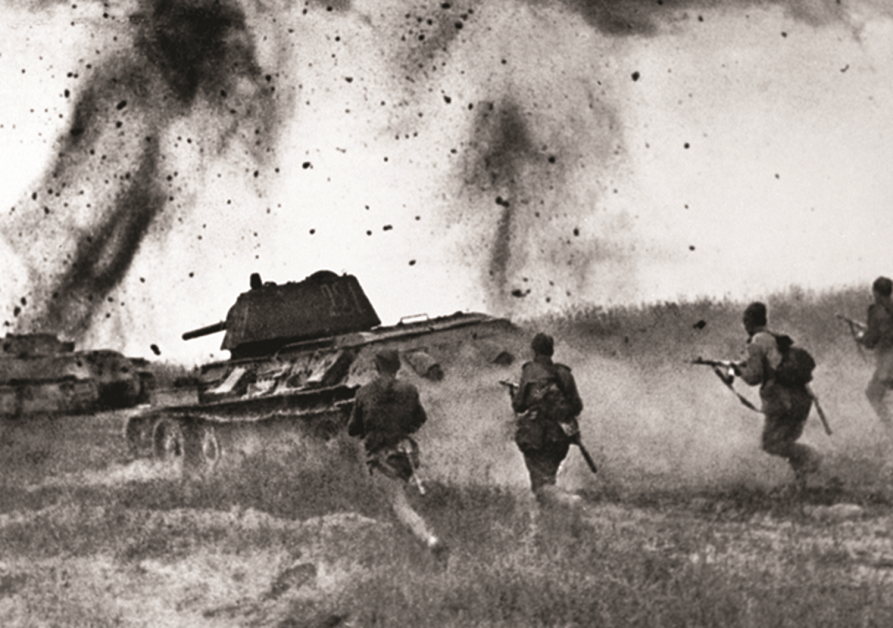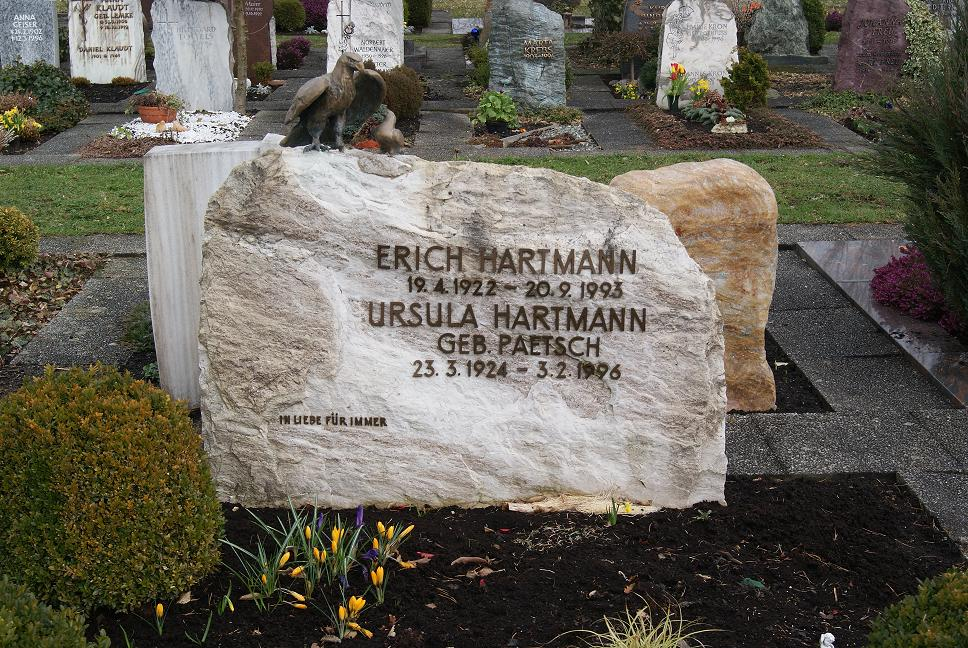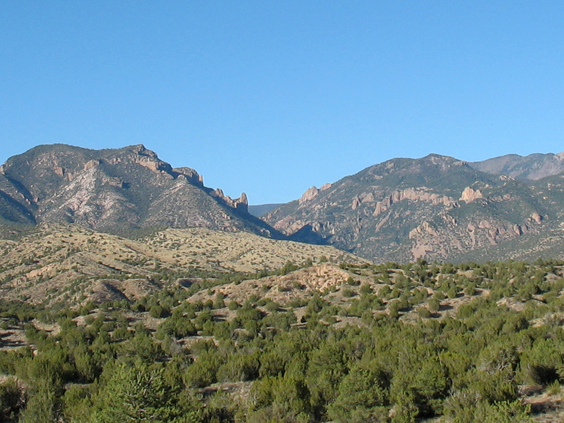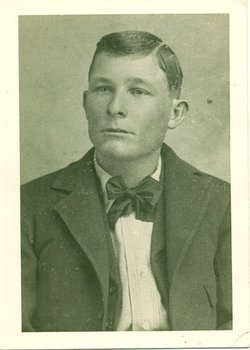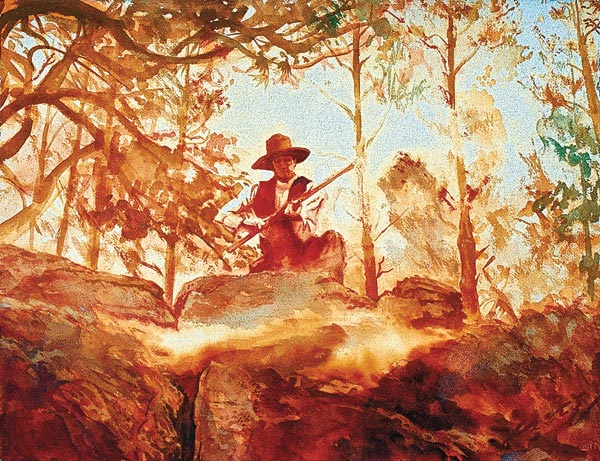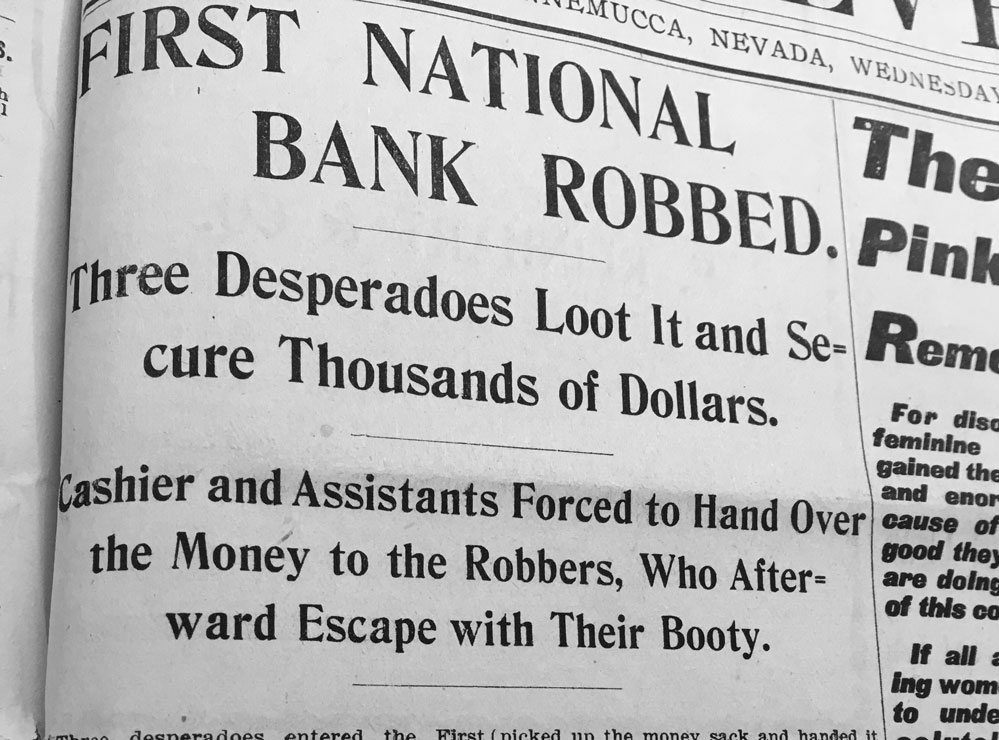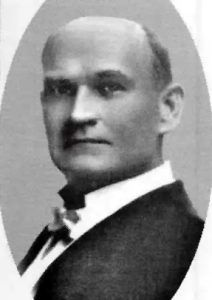9/12/1868 - William Richard "News" Carver (the nickname comes from the outlaw's enjoyment in reading about his and the gangs he belongs to exploits), the future outlaw that will gain notoriety as a member of the Wild Bunch (his wedding to soiled Forth Worth dove, Callie May Hunt aka Lillie Davis, sets in motion a bandit bacchanalia that will result in the dissolution of the gang after a celebratory souvenir photo the groom and his pals have taken is discovered and circulated throughout the West by Wells Fargo special agent Fred Dodge) is born to in Coryell County, Texas to George Alfred Carver and Mary Jane Rigsby Carver.
Fort Worth - 1900
Carver Is Standing On The Left With One Hand On The Shoulder Of Harry "The Sundance Kid" Longabaugh And One Hand On The Shoulder Of Ben "The Tall Texan" Kilpatrick,
Beside Him In Back Is Harvey "Kid Curry" Logan
Standing Behind A Seated Robert Leroy "Butch Cassidy" Parker
Described as a "good looking, quiet, nice boy," just one of the thousands of westerners that will take on the trade of cowboy before the turn of the century, Carver might never have been known to history if not for falling under the influence of his Uncle Dick (a former bandit that has spent time behind bars), who along with showing him the rudiments of the cattle business, introduces the youth to the basics of the outlaw trade when the men begin punching cattle together in 1889 at Half Circle Six Ranch in Texas' Tom Green County (an arid region on the Edwards Plateau, almost in the center of Texas, which is established in 1874 and named after Brigadier General Thomas Green, a Confederate officer killed in 1864 by a Federal gunboat shell while leading a division of Southern cavalry). At the ranch, Carver becomes friends with two sets of cowboy brothers with whom he will ride the owlhoot trail of banditry ... Thomas Edward "Black Jack" Ketchum and Sam Ketchum, and two of the Kilpatrick family, George and his older brother, Ben. During his time period at the Half Circle Six, Carver also falls madly in love with a local beauty, 17-year-old Viana Byers from the town of Dove Creek. The couple marry in February of 1892 and are seemingly on their way to a life of happiness with Viana pregnant, but all dreams the pair have of a live together become ash when Mrs. Carver develops a fever and she and the baby perish in July. The deaths and subsequent heartbreak (somewhat of a ladies man, along with countless evenings with a variety of "soiled doves," Carver will have relationships with Viana's younger niece, Laura Bullion, before passing her on to his Wild Bunch confederate Ben Kilpatrick, romances woman rancher Josie Bassett and her sister, Ann (who also dallies with Kilpatrick, Elzy Lay, and Butch Cassidy), and his second and last wife, Fannie Porter prostitute, Lille Davis) is more than enough to send Carver into a drunken bender in which he is more than willing to dice with the Fates and agrees to join up with the Ketchum's in creating a gang of desperadoes (along with cowboying together in Texas and New Mexico (Carver will also partner with Sam Ketchum in running the gambling concession in a San Angelo, Texas saloon between 1893 and 1895).
Tom "Black Jack" Ketchum
Choosing the wild of the outlaw life, Carver participates in his first train robbery on Friday, May 14, 1897, joining Tom Ketchum and cowboy turned gunman, David Atkins (on the run from a killing that took place only a few days before), in hitting the lonely train depot at Lozier, Texas (the whole community consists of a tiny depot and a telegraph office run by Miss Addie Upson, with the nearest town being either Dryden or Langtry, 15 miles up the tracks or 15 miles down the tracks depending on the direction one is traveling) Raiding the westbound #20 of the Southern Pacific Railroad, Ketchum and Carver hop aboard the train as it leaves Lozier, take control of the cab and stop the locomotive a few minutes from the depot where Atkins is waiting with a satchel full of dynamite. Access to the baggage car gained by bullets being fired into the coach and Messenger William Joyce responding to the Winchester induced entreaties of Engineer George Freeze to "open the door," the outlaws blow up two safes (destroying the baggage car), taking an hour and twenty-three minutes (made available by Atkins cutting the nearby telegraph wires) to plunder the train and stuff three burlap bags of loot before riding off to the north (the railroad will announce thy have lost $48,980 in the robbery, a hefty payday in 1897 ... worth almost $2 million in 2022). Posses escaped with days and nights of riding, the individual vanish into various cowboy jobs before coming back together for the group's next caper.
Atkins
The gang increases in size by one for its next robbery, with the one being Tom's brother, Sam Ketchum, and the next taking place on Saturday, September 4, 1897, when the bandits hit the southbound train No. 1 of the Union Pacific, Denver, and Gulf Railroad bound from Denver to Fort worth, the line's Texas Flyer. The spot selected for the robbery is the wilderness southeast of Folsom, New Mexico; only a few miles distant from Colorado's southern border, a site below Twin Mountain where the curves and elevation almost bring passing trains to a stop. Train boarded in Folsom, the bandits take control of the cab with their Winchesters, bring the engine to a stop at the heist's selected spot, intimidate the train's crew and it's passengers with randomly fired bullets (Express Messenger Charles Drew gets a Winchester clubbing from Sam Ketchum when he doesn't move fast enough for the outlaw), empty a safe the messenger is willing to open, and after two failures (its key is with the express agent in Amarillo), blow up a second safe with fourteen pieces (the destroyed express car is replaced when the train reaches Clarendon, Texas) and escape from the caper disappointed, carrying only $3,500 in cash and a consignment of silver spoons. Hiding place in Turkey Creek Canyon, Arizona reached without any encounters with the local authorities, the men immediately begin planning their next attack on New Mexico's trains (a crime punishable by death at the time).
Sam Ketchum
Turkey Creek Region
The gang expands again by one for its next job, adding out-of-work Texas cowboy and trail cook named Ed "Shoot-Em-Up-Dick" Cullen (a nickname he hangs on himself when he introduces himself to a Chinese restaurant owner he refuses to pay for his evening meal). The five men that hit the westbound No. 20 Southern Pacific train on the evening of December 7, 1897 at Steins Pass, New Mexico (the tiny bit of civilization is nineteen miles west of Lordsburg and a few miles short of the Arizona state line and consists, of a small train depot, a post office, a general store and a few other buildings ... just before robbing the train when it pulls into the depot at around 8:00 in the evening, Sam Ketchum, Cullen, and Atkins ransack the post office) are the Ketchum brothers, Tom and Sam, Will Carver, Atkins, and Cullen. Tom Ketchun and Carver cut nearby telegraph lines and build two bonfires on either side of the tracks where the gang wants the engine to stop, but run into problems when the fires illuminate their firing positions in the night and the employees and guards aboard the express car (more men than usual as the railroad has responded to rumors of an upcoming robbery, the car is defended by Messenger Charles J. Adair, and guards C. H. Jennings and Eugene Thacker) take advantage of the mistake, along with besting the bandits' rifles by using shotguns at close range. In the thirty minute gun battle that takes place, the car defenders take no hits, but strike each of the outlaws with buckshot ... Tom Ketchum is hit in the legs while he is trying to crawl beneath the car and blow it up with dynamite, Carver takes similar wounds, Sam Ketchum is twice grazed in the head, and Atkins is also struck in the legs Sam Ketchum and Atkins will angerly argue over which wound is the most hurtful. But Cullen gets hit the hardest, replenishing his ammo, the neophyte bad man exposes himself reaching into his saddle bag for bullets and takes a killing blast to his head. "Boys, I'm dead," Cullen cries out after being hit, and he is correct, his outlaw career comes to a bloody conclusion roughly three hours after it has begun. Wounded, a member down, knowing the authorities will soon be arriving, the surviving bandits mount there horses and flee, escaping two posses that come after them when they mistake another group of cowboys in the area as the desperadoes.
"Shoot-Em-Up" Shot Up!
Fleeing across the border into Mexico, the bandits avoid both Federales and American posses while resting up in northern Sonora and Chihuahua. They return to the States in 1898 to hit the Southern Pacific Railroad again with a different mix of gun thugs. For the Comstock, Texas (a small town out in the wilds of the Lone Star State, about 180 miles to the east of San Antonio) robbery of the lines No. 20 that takes place of April 28, 1898, the band of raiders consists of the two Ketchum brothers, Will Carver, and a man never fully identified that is thought to be Ben Kilpatrick; replacing Atkins who has tired of the brutality and viciousness in Tom Ketchum's personality (eventually he takes his adventuring across the Atlantic Ocean and hires out his services to the Kaffrarian Rifles of South Africa during England's war with the Boers). A evening robbery that slops over into the next day, the Ketchum Gang uses their usual playbook in the heist ... the train is boarded by two bandits, the outlaws take over the engine cab, split off the cars of the No. 20 they want to rob, move the engine, baggage and postal car, and express car two miles forward forward to a desolate spot called Helmet where they are joined by two more men, blow up the safe in the express car (the dynamite blast sends the safe through the roof of the car with a hole in it that is one foot in diameter), and ride off $20,000 richer than they were before the evening began. Or they get nothing at all based on the timely arrival in the vicinity of a troop of Texas Rangers, which is what the Wells Fargo superintendent, Gerrit A. Taft, tells the public. Whatever the case, there is no gunplay during the robbery and the men all escape into the night. Hiding in plain sight as working cowboys, the boys are ready to hit another train two months later. In the interim between the Comstock raid and their next job, the Ketchums and Will Carver are put on Wells Fargo wanted posters offering $1,000 each for their arrest and convictions (Carver laughs hearing the posters have his height and weight wrong, that he has a dark complexion that allows him to pass as a Spaniard, and funniest of all, that he has one glass eye). Taking a break from the heat, the Ketchums and Carver move about the outlaw hideouts of Colorado, Wyoming, and Idaho, where they meet future confederates, Robert Leroy Parker aka Wild Bunch leader Butch Cassidy (Cassidy likes Carver and discusses working with him in the future, but takes an instant dislike to the Ketchums and tries to talk Lay out of working with the brothers on a future New Mexico train robbery), Parker's best friend, bandit William Ellsworth "Elzy" Lay, and Harvey Alexander Logan, aka the man many will consider "the wildest of the Wild Bunch," the murderous Kid Curry.
Taking The Engine Cab
Butch's Wyoming Prison Photo
Returning to their southwestern stomping grounds, evidence that Cassidy was correct about the Ketchums is soon forthcoming. One tantrum too many, after almost killing a friendly rancher over a set of horses Black Jack wants for free despite promising to pay for them, and yet another fight with his brother over the gang's leadership, Sam Ketchum and Carver kick Tom out of the gang he created and has led. The job set for 1899 though is still on, and the pair soon meet up with Lay and another new recruit, another former Texas cowpuncher, Bruce "Red" Weaver (recently recovered from coming down with smallpox) near the town of Cimarron, New Mexico. There, drawing the attention of locals, the outlaws set up camp nearby while prepping for their coming robbery, buying supplies (Carver, using the alias of G.W. Franks, will place orders for two forty-inch rifle scabbards, a .30-40 carbine, and a thousand rounds of .30-40 smokeless ammunition ... delivered before the job to "Simerone" by the employees of Wells Fargo), taking occasion meals, and sometimes imbibing a little while playing a little Saturday night poker). At the beginning of July, the men suddenly vanish from the locale, reappearing on the Tuesday night of the 11th at almost the exact same site of their 1897 train robbery. Bold or foolish, they hit the Southern Railway's No. 1 at the same double curve, using the same tactics as previously, although the dynamite this time is managed and set off by Carver (who also sets the bonfire where the No. 1 is ordered to stop after being boarded by two outlaws at it's Folsom water stop). Safe penetrated and car ruined in the blast, the outlaws enjoy whiskey, pears, and peaches (the latter two items found among the wreck of the express car) before escaping with over $70,000 in plunder. Thinking retribution is a long ways away, Sam Ketchum, Lay, and Carver (Weaver has ridden off from the gang after receiving his portion of the loot, pursuing a vendetta against William Holliman over dating the latter's sister, he will be killed in Alma, New Mexico in 1901) settle into their familiar Turkey Creek Canyon mountain hideaway, where on Sunday afternoon, July 16, 1899, a posse of lawmen (quicker than expected, posses are sent out from Cimarron, Walsenburg and Trinidad, Colorado, and from Wells Fargo) consisting of Cimarron Marshal Creighton M. Foraker, Wilson "Memphis" Elliott, a bounty hunter from Texas, mountain teamster James H. Morgan, Sheriff Edward J. Farr of Colorado's Huerfano County, railroad detective William Reno, cowboy Henry M. Love from the nearby Springer Brothers Ranch, locals Perfecto Cordova and Santiago Serna (Serna will leave the group before they find the outlaws), and Frank H. Smith, a well-connected youth visiting friends, Chicago-based ranchers Garrett and McCormick
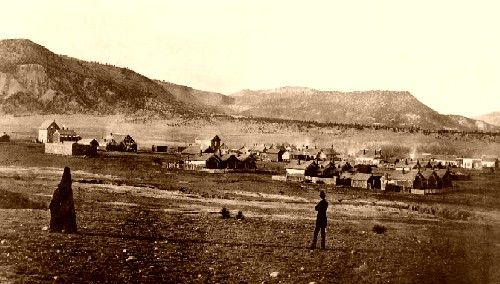
Cimarron, New Mexico
Carver
Using information provided by Morgan that he has seen the posse's quarry head into Turkey Creek Canyon, the lawmen follow the outlaws' trail to their hideout, find the site eight miles into the canyon (as the crow flies, they are eleven miles from Cimarron), and in the late afternoon, quietly start setting up on ridges surrounding Ketchum, Carver, and Lay. Before everyone is in place for their ambush of the outlaws though, Lay comes out of the trees with a canteen and makes his way to a pool of water in the dry creek of the canyon (Ketchum and Carver are standing beside the group's campfire. Ignoring wasting time asking for the bandits to surrender, at a range of roughly a hundred yards, Farr fires on Lay, and knocks the outlaw to the ground with a bullet to his left shoulder and one in his back from another member of the posse. Gunfire sprouting from all directions, Ketchum and Carver take up positions behind sturdy pines and large boulders and begin firing back at the posse. Surprised, at first the lawmen seem to have the advantage as Lay's wound knocks him out for a few minutes, and Sam is hit from 150-yards away by a rifle bullet from Elliott that breaks the outlaw's left arm (additionally, two of the four horses the bandits have are killed) just below his shoulder. Taking on the whole posse, Carver finds a protected spot where he can fire without being seen, and is soon sending slugs all about the canyon, while at the same time, Lay crawls back to the camp fire, gets his Winchester, and though he drifts in and out consciousness, also begins firing on the posse. Hiding from the heavy fire coming their way, Farr and Smith hide behind a tree that is not big enough to hide both men, and not thick enough to stop the steel jacketed slugs the outlaws are using thanks to Carver's ammunition order. Smith is the first lawman to be hit, going down with a Carver round that passes through the flesh of the youth's left calf. Lay, awake targets Farr, grazing the lawman's right arm just above his right wrist, stepping back to wrap a handkerchief around his wound, the outlaw then adjusts his aim and sends a bullet one hundred yards at the Colorado sheriff. A killing shot (many historians believe that it is actually Carver that fires the round that does in Farr), the round pierces through several inches of wood before plowing into the thirty-one-year-old Farr's chest as he collapses on top of the wounded Smith, living just long enough to whisper to Smith to "say goodbye to my wife and baby." The battle all Carver's again, Lay faints after his killing shot as accurate fire from the Texas cowboy takes Reno out of the contest with four near mixes that go though the railroad detective's clothing, and a grazing shot the cuts two of the cartridges on his belt in two. Then Carver drives the other men behind a large rock outcrop that the men can only fire from by exposing themselves to the outlaw's marksmanship, effectively pinning the men down until evening falls. During this period, Carver mortally wounds Love when a slug from his Winchester hits the man in the leg, sending shards of an unclean knife (before joining the posse, the cowboy has been using the knife to treat anthrax infected cattle) into the flesh and bones of the deputy's right thigh (too late to treat Love when doctors finally see him eighteen hours later, the cowboy dies in agony four days after being wounded).
Lay Is Hit And The Battle Begins - True West
Magazine Illustration
Looking For A Target - True West Magazine
Illustration
Farr
The arrival of darkness and the steady rain allow the outlaws to move up and out of the canyon to the west using only two horses (Carver will walk while making sure Ketchum stays on his mount), refusing to leave Sam behind as the outlaw requests of his companions. Deciding they need to rest, the men are able to travel only three miles to the confluence of Cimarron and Ute Creeks, where they decide to rest in a small cabin used by a rancher, his wife, and the rancher's sons, the McBrides. Though Lay wants to stay there and fight off any lawmen that might show up, both Carver and Ketchum finally convince him of the pointlessness of that being the men's best play, and as difficult as the decision is, Sam is left behind to fend for himself (but not before giving his cash and gold watch to Carver). Tiring of their guest, for $500 in reward money, the McBrides let authorities in Cimarron know where one wounded bandit is residing, and on Wednesday, after a brief struggle with lawmen, Sam is arrested. Taken to the territorial prison in Santa Fe, the 45-year-old outlaw dies on July 24, 1899, from blood poisoning after not allowing a doctor to remove his wounded arm (Sam's crazy brother Tom will try to rob the No. 1 at Folsom again, by himself this time, and in the August 16th attempt, he will be suffer a wounded arm that requires an amputation, and captured, gets put on trial, is convicted, and sentenced to death by hanging ... a hanging that instead becomes a decapitation when the authorities butcher the execution. Dead on April 26, 1901, Black Jack is 37-years-old at his leaving). While Ketchum is dying in prison, the other two outlaws remain at large, and because of the deluge of rain that hits the area, the search by authorities is quietly called off. The specific hunt ended doesn't mean the outlaws are in the clear however, and on August 16th, outside the town of Chimney Wells, New Mexico, the men are betrayed to the law by V.H. Lusk, a rancher they think is their friend, while trying to get fresh mounts. Lay is arrested for various outrages (the outlaw does not go into captivity peacefully, wounding Lusk in the wrist and forearm, Deputy John D. Cantrell in the left shoulder and arm, before being clubbed into submission by the revolver of Sheriff Miles Stewart ... tried and convicted, Lay will receive a life sentence in the New Mexico Territorial Prison, but keeping his nose clean, he is released in 1906 after helping stop an escape in which the warden's wife and daughter are taken hostage, and goes on to be an upstanding citizen, marrying and siring a family, and working a variety of jobs that include running a ranch, working as an oil-field scout, running several saloons, serving as a payroll guard, and at the time of his death on November 10, 1934, at the age of 65, he supervises the building on the All America Canal in Southern California ... he is also thought to have dug up the Ketchum Gang's hidden loot to his post outlaw wanderings). Wilier than Lay on the morning of the 16th, Carver watches his confederate's capture through field glasses from a nearby hill before waving his hat and yelling "adios" to his partner and Sheriff Stewart, before riding off to the northwest.
Dead Sam
Convict Lay
Black Jack Gets Ready To Go
Experience verified, introductions previously made, with the Ketchum Gang destroyed, Carver is almost immediately welcomed into an even more dangerous conglomeration of robbers and killers, the Wild Bunch of Butch Cassidy, Harvey Logan, and the Sundance Kid. When four other members of the gang (Tom Capehart, Thomas C. Hilliard, Ben Kilpatrick, and Logan) leave their cowboying jobs with the WS cattle and horse ranch of New Mexico ride away from the area due to posse pressure and new northern heists, Carver is purported to ride with the men and takes part in the series of events events that result in the murders (mostly attributed to Logan)of amateur deputies Andrew A. Gibbons and Frank LeSueur out of Springerville, Arizona, Grant County Cattlemen's Association bounty hunter George Scarborough (the former deputy marshal and sheriff responsible for killing John Selman, the man who murdered gunfighter John Wesley Hardin in 1896, he leaves behind a widow and seven children), and there are rumors that he participates in the gang's 1899 robbery of the Union Pacific Overland Flyer No. 1 outside of Wilcox, Wyoming (the infamous job in which express car messenger, Charles Woodcock, has to be dynamited out of car he is protecting, a heist that gains the bandits unsigned bank notes, nineteen scarf pins, twenty-nine gold plated cuff links, for Elgin watches, and over $50,000 in cash). There is nothing purported however about the role Carver plays in the bank robbery that takes place in Winnemucca, Nevada on the Wednesday morning of September 19, 1900.
The No. 1 After The Wild Bunch
Refusing to break his word to the governor of Wyoming that he will commit no further crimes in the state (instead, most of the rest of the gang hits the Union Pacific railroad at Wilcox, Wyoming), Butch Cassidy gets together with the Sundance Kid, and Carver, to plan a Wild Bunch job for Nevada that will confuse the authorities as to which outlaws are where (a plot that is still working to this day!). Chosen for a Wild Bunch visit is the town of Winnemucca (named for a Northern Paiute Indian chief that once called the area home, the actual word means "one moccasin"), a small town the sprouts out of the Nevada desert along the Humboldt River when the transcontinental railroad, mining interests, and the sheep-herding of Basque immigrants all come together in the Silver State after the American Civil War ends in 1865. Selected as the target of the trio's lawlessness is the town's First National Bank located at the corner of Bridge and Fourth streets. The heist planned and scouted (Sundance will evaluate the town and bank over several days while working there as a member of a road repair team), extra horses are procured for the outlaws' escape after the robbery and placed with friends along the men's escape route into Idaho, the Three Creek Store of James and Elizabeth Duncan is robbed for supplies (friends of Carver, it is cover for if the authorities get curious as to the source of the outlaw's groceries ... after the robbery, the Duncan's will secretly be paid in full). Shortly after noon on the 19th, with Cassidy and Sundance armed with Colt .45s, and Carver covering the proceedings with a Winchester (inside the bank are part owner and head cashier, George Nixon, three assistant cashiers, and a single customer, horse buyer W.S. Johnson), helped along by Cassidy holding a Bowie knife to the throat of Nixon so the banker opens the vault, the bandits spend five short minutes transferring 125 pounds of gold coins worth $32,640 into ore sacks, then gallop out of town (the posse that follows the bandits towards Idaho gives up after a single day), but stop briefly when a sharp turn in their route out of town causes a bag of gold to fall into the street (shots are exchanged with a couple of citizens, including the town's Deputy Rose, who fires at the men from the front of a locomotive he has commandeered, no one however on either side is hit). In, out, and away, what makes the robbery special in Wild Bunch lore are two incidents that take place before and after the heist. Making his way into town by himself so as to not raise any suspicions that the bank might be raided, Carver encounters and kills an angry skunk that doesn't leave peacefully, covering the outlaw in a stench that lasts for days, and causes his companions to ban him from the warmth of their campfire (and causing his horse to balk each time he tries to mount the animal) ... and provides the outlaws with something to tease Carver about on future endeavors (the Pinkertons will even mention his foul smell on the wanted poster that comes out afterwards, and hostages inside the bank will hold their noses until the robbery is over, and sets off Carver temper so that he eventually yells, "Damnit, I can't help it. He got me first!"). The other incident involves a local 10-year-old youth named Vic Button, who rides to school in Winnemucca for his education from his parent's nearby CS ranch. Passing the camp of three cowboys outside the town, the boy falls in love with the magnificent white horse of one of the men and offers to swap rides, an offer that the cowboy refuses, saying he still needs the animal for some upcoming work. Not dissuaded, each day for a week the youngster rides by the cowboy camp on a different horse, and continues to offer the horse's owner a swap, much to the amusement of the men. Cowboys gone after the robbery takes place, the boy is surprised when he finds the stallion picketed on his parents, property with a note saying the horse did its jobs and now is a gift to the youngster from Butch Cassidy (later, Button will also receive a personal copy of the Wild Bunch's Fort Worth visit, sent personally through the mail by Cassidy). Not caring the gift is from a notorious outlaw, Button will name the horse Patsy and ride her for years and years.
Winnemucca - Bank Is Building On The Left At
The End Of The Street
George Nixon
Sundance And Etta Place
Button And Patsy Ten Years Later
Phones and telegraphs making the West a smaller and more dangerous place for the mounted outlaw, despite the outlaw band successfully robbing a train and a bank within three weeks of each other, Cassidy and Sundance decide that they will pack of their plunder and become gentlemen ranchers in South America (Carver is invited to come along with his bride, but states he'd rather "die on dirt I know than live in some jungle."), and with all the outlaws having money in their pockets, using the outlaw mail system of cryptic notes being left in specific hollow tree stumps, Logan, Kilpatrick, and Carver agree to meet Sundance and Cassidy in Fort Worth, Texas (a town of roughly 27,000 people, there will also be playful jaunts to San Antonio and Houston, and Carver and Logan also make a quick tip to Shoshone, Idaho to dig up some of the gang's gold before returning to Texas by way of Salt Lake City and Denver), for a multiple day celebration (there will be lots of drinking, gambling, and bedroom carousing to go with buggy rides and picnics) of the two men leaving the states, and to wish Carver and the lady he plans to wed, prostitute Callie May Hunt, aka Lillie Davis, a long and happy wedding. On December 1, 1900, Carver, using the alias William Casey and Hunt are married by Tarrant County Justice of the Peace, John P. Terrell. Commemorating the entire Texas reunion and their comradery for each other, on Wednesday, November 21, 1900, the men congregate in their go to church Sunday best clothing (top hats, neckware, vests, white shirts, ironed patches and gold watch chains exposed), dressed like wealthy businessmen and ranchers at the Swartz View Company owned by photographer John Swartz for a photo that becomes one of the most famous ever taken during America's Wild West days (the idea is either Cassidy's or that of the Sundance Kid) ... a picture capturing the nucleus of the Wild Bunch in their prime, Carver, Logan, Cassidy, Sundance and Kilpatrick, called The Fort Worth Five. A beautiful portrait photo, but a stupid idea, because it gives the authorities a solid view of what the outlaws really look like that soon is used on thousands of dead-or-alive wanted posters that flood the west; a shot that plays a part in the violent fates each of the bandits will experience. Hubris and ego overflowing from his many escapes from justice while riding with the Ketchums, his transition into a leadership role with the Wild Bunch, and his recent twin triumphs of planning and pulling off the gang's Winnemucca raid and finding love again, the first to go will be the skunk man, Carver (Logan breaks out of a Nashville, Tennessee jail in 1903, and running from a posse after a failed train robbery, commits suicide after being wounded near Parachute, Colorado in 1904, Cassidy and Sundance are thought to be killed in San Vincente, Bolivia in 1908, and after spending time in prison, Kilpatrick is clubbed to death by an express messenger after attempting to rob a train near Sanderson, Texas, in 1912).
Business Card
The Fort Worth Five
Carver
Foolishly remaining in Texas after Carver gives his new bride $167 and tells her to visit her parents until he comes to get her (an event which will never take place), Carver, Logan, and Kilpatrick rent a buggy and beginning touring the region for their next mark, make visits to the homes of Carver's and Kilpatrick's parents, recruit Kilpatrick's younger brother, George, into their new band, and seek vengeance against the rancher that betrayed Elsy Lay in New Mexico back in 1899, Rufus Thomas (living in San Angelo, Texas, Thomas narrowly misses two assassination attempts on his life by Carver in the spring of 1891). And as often happens when Logan is around with his hair-trigger temper and quick shooting marksmanship, there will be yet another Wild Bunch murder to aggravate the authorities when farmer Oliver C. Thornton is shot to death after arguing with the Kilpatricks over the brothers' failure to stop their swine from wandering on to Thornton's property (a crime that will never be fully solved as most of it's principles end up dead themselves in the next few years). With many folks reporting spottings of Caver and Ben Kilpatrick to the authorities, tensions grow as the day the men have selected to rob the First National Bank of Sonora, Texas, on Wednesday, April 3, 1901 gets closer. As if announcing their presence in the area, the outlaw's camp is established on the range of the T Half-Circle near a waterhole between the towns of Ozons and Sonora, the bandits foolishly steal oats for their horses and a quarter of beef for themselves from the headquarters of Sol Mayer's ranch. Horses ready and a relay established to swaps mounts outside of town while escaping any posses the law might set in motion, weapons cleaned and loaded, the foursome of Caver, Ben and George Kilpatrick, and Harvey Logan ride into town at dusk the day before the planned robbery and check out the town and bank one final time (mostly for George Kilpatrick who claims to have never been within the town's limits). Posing as buyer/sellers of polo ponies (an odd choice in cattle country), the gang inquires after baking powder, flour, and oats at the Castillo store on Plum Street, but move on when the oats are not available, with Ben Kilpatrick and Logan tying up their mounts in a sparsely populated part of town away from prying eyes, awaiting their partners, while Carver and George Kilpatrick first visit a stable across the street from the bank, before tying up at the nearby bakery and grocery store of W.J. Owens, and go in to buy the grain they've been seeking.
Sonora, Texas
Unbeknownst to the outlaws, alerted days before that Wild Bunch bandits might be in the area, the outlaws movements have been tracked by Boosie Sharp, a bartender at the town's Maude S saloon. Hurrying to the sheriff's office in the local courthouse, Sharp passes his information on to Sheriff Elijah Briant, and Briant in turn quickly puts together a small group of deputies (former sheriff J.L. Davis, the brother of the bartender, Henry P. Sharp, and Constable W.D. Thomason) and takes the group to the Owens store. Not leaving George outside as a lookout, in the store, Kilpatrick is standing next to the front door while Carver is at the counter finishing filling a sack with grain and tying it closed (both men are armed only with their pistols), when with guns already pulled (the previous year Briant had been shot and almost killed when he tried to arrest a local rowdy without first drawing his revolver), the lawmen enter the business and demand the two men's surrender at roughly 9:00 in the evening. Rattlesnake swift, Carver goes for his Colt .45, but the weapon gets entangled in his suspenders as he is drawing, and the lawmen do not wait for the weapon to be cleared before opening fire on both men. Bullets flying, Carver is partially unarmed by a Briant bullet that hits the outlaw in the right forearm and causes him to drop his revolver. Attempting to pull his other weapon left handed (a .38 Army revolver), Deputy Davis puts Carver on the floor with a round that hits the desperado in the chest. Down, but still game, Carver gropes along the floor for his Colt (Deputy Sharp kicks it away before the bandit can reach it), but takes even more hits groping for his weapon before going still. Not forgotten, the totally surprised Kilpatrick is not fast enough to even get his revolver out of his holster, and he too is sent to the floor, compliments of the marksmanship of Constable Thomason (Kilpatrick has a round enter his left breast and come out below his shoulder, and is also hit twice in his left arm, is shot on the left knee, and a glancing bullet also hits him in the forehead ... thought to be dying from fourteen wounds, the young outlaw will rally and survive his wounds). Gunfight over in seconds (thankfully, one of the lawmen's misses also misses Owens' wife and daughter, who are in the next room baking bread), the Tall Texan and Kid Curry hear the noise coming from the store, instantly comprehend its meaning, mount up, and ride out of Sonora, never to be seen within the city limits again. Taken to the courthouse on doors taken off their hinges, Carver has a slug go through his right lung before coming to rest near his spine, is hit twice in the right arm, causing two fractures to the limb, twice in the right leg, also causing two fractures to limb, once in the left arm, and once in the left temple (the bandit's personal inventory consists of a silver-mounted, ivory handle Colt .45, a hammerless Smith & Wesson pistol, a beltful of gun cartridges, a gold Elgin watch, a small compass, a diamond ring, two $20 gold certificates, and thin gold wedding ring, and two small photographs, one of his wife Viana, and one of his girlfriend, Viana's niece, Laura Bullion).
Briant
Carver In Death
A valued outlaw of the Ketchum Gang and The Wild Bunch, "News" Carver's criminal career comes to a savagely swift and blood conclusion in Sonora, Texas on Tuesday, April 2, 1901 (unattended by members of his family, Carver has his funeral paid for by his rancher friend of years, George Hamilton, and he is buried under the rites of the Methodist Church in an unmarked grave that a mysterious veiled woman has a stone placed over reading simply, April 2, 1901), the hard cowboy and gunslinger is thirty-two at the time of his leaving.
Carver's Nameless Final Resting Place
.
















